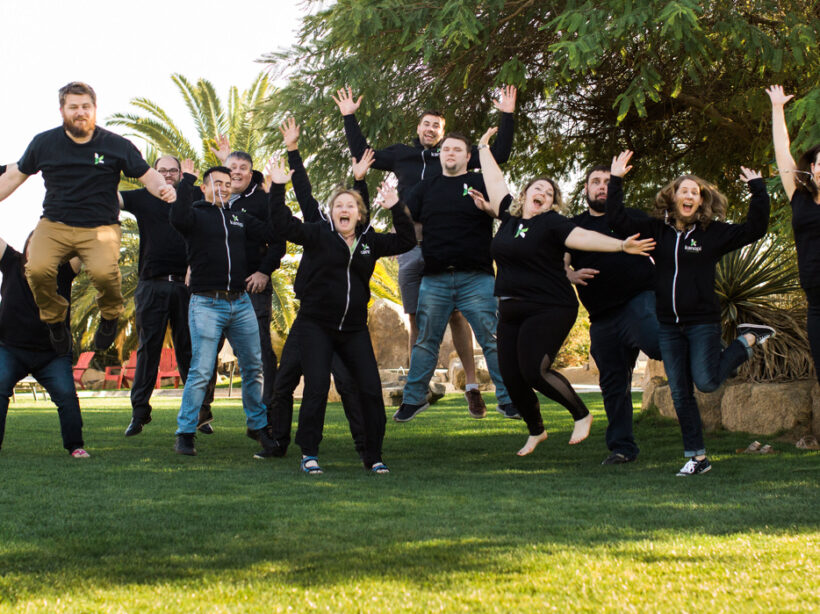One of my favorite things to talk about with clients is how to get the most of your budget. As Kanopi’s CEO, I spend every day doing exactly that. So much so that I created the above webinar around making your site last for the long-term. But I also wanted to touch on some of the principles and tools here in a post
In the older days of the web, it was standard to redo a site every few years. There were enough drastic changes in the early days of the internet that every few years it was imperative to overhaul a site to keep up. It cost a lot of money, and could take anywhere from 6 to 12 months depending on the scope.
But here at Kanopi, we’ve recognized that the internet has grown up, and we’ve gotten away from that approach. Can we do a full overhaul if it’s the best option for your project? Absolutely! But we prefer to adopt a more Kaizen approach. Why? Because websites are never done. We like to say the first day of your project is actually the day your site launches, because yes, it’s wonderful that you’ve built a site, but now it has to evolve and grow over time. And the best way to do that is via a continuous improvement approach that improves it in small, positive increments over time. It’s more sustainable for both your team and your budget.
How do I apply continuous improvement to my website?
Usually you know when it’s time to give your site some love. It’s typically when you can say yes to any number of the following questions:
- Has your organization evolved?
- Has your industry evolved?
- Can your users find what they are looking for?
- Have your users’ needs changed?
- Is your content presented effectively for your users?
- Is your conversion rate declining?
- Have your search engine rankings changed?
- Have your competitors changed their approach?
- Is your site fast enough?
- Does your site overuse design trends?
- Does your site look great on mobile devices?
- Is your site easy to use and edit?
So let me ask you: even if you can answer yes to just ONE of these questions, why not make that small improvement now? Why wait until you have lots of issues that require a larger lift? If you had a 100 year old house, you wouldn’t ignore all the small problems that accumulate over time. You’d fix them as they presented themselves, or else your house becomes an expensive money pit (or a total tear-down).
This is where you need to think about your site in terms of a circular flywheel. Don’t think about your site in terms of Strategy > Design > Development > Launch, and then let it sit untouched for a while.
Instead, think of a circular process of Strategy > Implement > Learn & Iterate, where after you Iterate, you revisit Strategy again! This will translate into a site that is always being refreshed and improved without breaking the bank.
Start with Strategy
No matter what we do, at Kanopi we always start with strategy. Here is where I recommend focusing on what matters most to your user and stakeholders, and don’t waste your time on things that don’t matter. This is where you can look at doing any of the following activities;
- SWOT analysis: outline your strengths, weaknesses, opportunities and threats.
- User journeys: look at how your users go through your site. What pathways do they take, and do those align with the pathways you want them to follow?
- Personas: how well do you know your users? Are you targeting the right audience?
- Competitive Analysis: what do your competitors do well? What do they do poorly?
- Data & Analytics: what does your data tell you? Do you know how to interpret it?
- Site Audit: is your content old and irrelevant? It may be time to either update or archive it.
Once you’ve taken a look at all those items, then it’s time to make a plan for moving forward. There are many areas of your site where you can make incremental — but positive — improvements to address the above strategic questions:
- Information architecture: should you rework your links, or change how your site is structured?
- Usability: how can you make it easier for visitors to use your site?
- Design: small design enhancements
- Accessibility: how accessible is your code and your content?
- Performance: is your site as fast as you need it to be?
- Content: are your calls to action clear? Does your content speak to your users?
Consider these quick wins
Decide which of these matter the most to you and can propel you forward in the best way. You can start with some low-hanging fruit, such as:
- Navigation: remove links people click on the least.
- Simple theme changes: refining the type and tweaking the color palette.
- Focused design: make design alterations to the homepage or key landing pages.
- Accessibility: make sure your content is accessible as possible, including your images.
- Reimagine or archive content: freshen up content that needs it, and archive content that is no longer useful or relevant. Check out this presentation about auditing your site for additional help, as well as this one on content strategy improvements you can make today.
Now it’s time to Implement
Here’s where we operationalize the plan. Break the work into two- or three-week long sprints. Determine what you can get done in that concentrated timeframe that will get you the results you need. It sounds a bit like agile development, and it is in the sense of breaking it into smaller chunks. A sprint schedule helps deliver value quickly and consistently. As we like to say: small bites create big wins!
Learn and improve from there
Now that you’ve completed that one discrete piece, measure it. How did it go? What can be improved?
Doing these activities can also help keep the momentum going:
- Share wins and successes: talk with your team about what worked and how it can be made even better.
- Measure regularly (weekly/monthly/rolling): by doing regular data checks, you can keep on top of what is still working over time.
- Schedule user testing: remember, your site is all about meeting your users needs. Test with users regularly to make sure you’re still meeting their needs.
- Use sprints to integrate feedback: you can even set up feedback on a sprint schedule.
Will all that information, keep the momentum going and head back to Strategy!
Continuous improvement keeps you nimble: you’ll to get into a place where you’re doing less, launching more often, and making more impact. And if something doesn’t work as well as expected, luckily it’s over after a short time frame, so you can move on to the next piece.
And if you have a Drupal 7 site, we wrote a whole blog post specifically about how there’s still life in your D7 site. You can keep it going for a while past its expected end of life in Fall 2021. (On the other hand, if you’re determined to upgrade to Drupal 9, check out our guide on D9 planning: a guide to upgrading or extending the longevity of your site.)
Tools for making your website last
Here are some tools that can help you extend the life of your site. This is not a comprehensive list (each category has many more great options), but these are some of our regular go-tos:
SEO
Search engine optimization is an ever-evolving practice of increasing the quality and quantity of website traffic by increasing the visibility of your website (or a specific web page) to users. But you don’t have to be an expert in SEO to make demonstrable improvements to your site with some handy tools:
- Google Search Console, Bing Webmaster Tools: if you are not communicating directly with the search engines, you are missing out on valuable tools and information.
- SEM Rush: research both your and your competitor’s keywords, and identify pages that rank for the terms for which you want to rank.
- Screaming Frog SEO Spider: crawl your site like a search engine does, and see exactly what they see. Helps identify issues and opportunities.
- Moz Local: if you manage a local business, check out this suite of tools that helps you define data about your business, and distributes it to aggregators and sites where you want to be found.
- Majestic: research and develop backlink strategies with Majestic’s incredibly vast link database.
Accessibility
These days it’s imperative to make your site accessible. In many industries — and the number is growing — it’s illegal to have an inaccessible site. These tools can help you get there:
- Wave: a browser extension that checks for compliance issues found in Section 508 and WCAG 2.1 guidelines.
- Lighthouse: an open-source automated accessibility testing tool. Available as a browser extension, from the command line, or as a Node module, this tool will scan the URLs for performance, accessibility, SEO, and more.
- Axe: Axe is an accessibility testing engine for websites and other HTML-based user interfaces. It’s fast, secure, lightweight, and was built to seamlessly integrate with any existing test environment so you can automate accessibility testing alongside your regular functional testing.
- SiteImprove: their content and accessibility audits use Web Content Accessibility Guidelines (WCAG 2.1) as its guide. The tool checks that there are no broken links or misspellings, and also identifies when page content is too dense or hard to comprehend.
- TotA11y Plugin: this tool helps visualize how your site performs with assistive technologies.
Additionally, here’s another blog post we wrote about Kanopi’s Favorite Accessibility Tools. Also read our thoughts on how content editors hold the keys to an accessible website.
Usability
It’s critical to test with your users to make sure they are getting the information they want when they want it. These tools will help achieve that:
- UserTesting.com: a usability customer experience testing platform that gets on-demand feedback about a product or service from real users.
- HotJar: HotJar uses heatmaps so you can see how visitors are really using your website, collect user feedback and turn more visitors into customers.
- Crazy Egg: you can use Crazy Egg to learn what your web visitors are doing. Heatmaps, recordings, A/B testing & more.
- Optimizely: It’s best known for its A/B testing, and allows for terrific segmentation for more accurate results.
Measuring Data
We always recommend measuring what matters, and that will be different for every organization. What matters to you? Is it the number of page views? Is there a certain conversion goal you are trying to hit (like number of donations, or email newsletter sign-ups)? Is it page views? Or perhaps speed?
- Google Analytics: this is Google’s free web analytics service that allows you to analyze in-depth detail about the visitors on your website
- Google Tag Manager: a free tool that allows you to manage and deploy marketing tags (snippets of code or tracking pixels) on your website or mobile app without having to modify the code.
- Lighthouse (again): because this open-source automated testing tool does so much more than just accessibility, we had to include it here as well. Available as a browser extension, from the command line, or as a Node module, this tool will scan the URLs for performance, accessibility, SEO, and more.
- GTmetrix: a free tool that analyzes your page’s speed performance. GTmetrix generates scores for your pages and offers actionable recommendations on how to fix them.
However you measure your data, you will have to track your users. And it’s critical to find the balance between learning from your users without getting insidious with how the data is being collected. We all want to know more so we can make better websites that attract users, but we need to be responsible about it!
With small bites, you can make your website last!
At Kanopi, we love to say, “small bites create big wins!” And it’s just so doable: you really can make huge improvements in smaller chunks to avoid feeling overwhelmed and also keep your budget in check.
But if you do need the assist to make your website last for the long-term, that’s our specialty. Contact us. We’d love to help.









